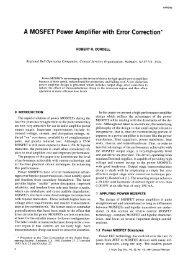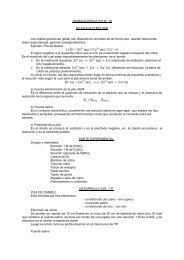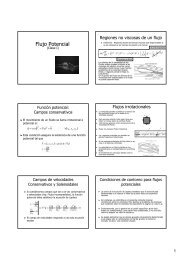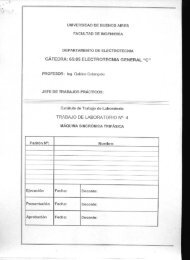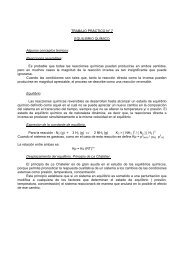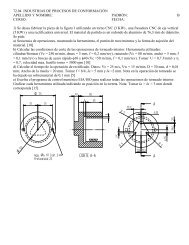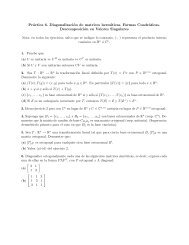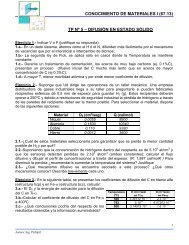Introduction to vector and tensor analysis
Introduction to vector and tensor analysis
Introduction to vector and tensor analysis
You also want an ePaper? Increase the reach of your titles
YUMPU automatically turns print PDFs into web optimized ePapers that Google loves.
The position vec<strong>to</strong>r r = <br />
i xiei is a special vec<strong>to</strong>r field for which Eq. (2.38)<br />
implies<br />
dr = <br />
dxiei. (2.40)<br />
The square, (ds) 2 of the infinitesimal distance moved is then given by<br />
(ds) 2 = dr · dr = <br />
If r(u) is space curve parametrized by u then<br />
i<br />
2 ds<br />
=<br />
du<br />
dr dr<br />
·<br />
du du ,<br />
Therefore, the arc length between two points on the curve r(u) given by u = u1<br />
<strong>and</strong> u = u2 is<br />
<br />
u2<br />
dr dr<br />
s = ·<br />
du du du.<br />
u1<br />
i<br />
dx 2 i<br />
In general, we have (irrespective of the choise of basis)<br />
d(a · b) = da · b + a · db<br />
d(a × b) = da × b + a × db<br />
2.6.4 Gradient, divergence <strong>and</strong> curl<br />
Let a rectangular coordinate system be given C = (O, R).<br />
Nabla opera<strong>to</strong>r ∇<br />
The vec<strong>to</strong>r differential opera<strong>to</strong>r del or nabla written as ∇ is defined by<br />
∇(·) = <br />
ei∂i(·) (2.41)<br />
where · represents a scalar or –as we shall see later– a vec<strong>to</strong>r field. Notice that<br />
the i’th component of the opera<strong>to</strong>r is given by<br />
i<br />
∇i = ei · ∇ = ∂i.<br />
This vec<strong>to</strong>r opera<strong>to</strong>r possesses properties analogous <strong>to</strong> those of ordinary vec<strong>to</strong>rs<br />
which is not obvious at first sight, since its operation is defined relative <strong>to</strong><br />
the choise of the coordinate system, in contrast <strong>to</strong> the vec<strong>to</strong>r algebra defined<br />
hither<strong>to</strong>. We shall postpone the demonstration of its vec<strong>to</strong>rial nature until<br />
section 4.5, where we have become more familiar with <strong>tensor</strong> calculus.<br />
The gradient of a scalar field φ(r) is defined by inserting a scalar field in the<br />
above definition:<br />
grad φ = ∇φ = <br />
(∂iφ)ei<br />
17<br />
i




